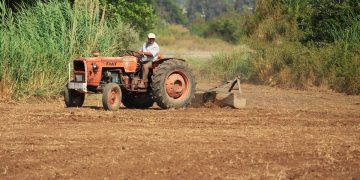The April edition of the JRC’s Anomaly Hotspots of Agricultural Production (ASAP) assessment is now available at: Anomaly Hotspots of Agricultural Production (ASAP) assessment
Main findings of the April global overview:
- In Southern Africa, the main cereal season is ending with generally good prospects thanks to favourable agroclimatic conditions in most parts of the region throughout the 2022/2023 agricultural season. However, drought and flooding have impacted crop development and will result in reduced yields in south-western Angola, northern Namibia, southern Malawi and Mozambique. Pastoral conditions are favourable in most parts, except for some areas in Namibia.
- In East Africa, March-April rainfall has generally been abundant in the Horn of Africa, supporting early season crop growth stages, emergence of pastoral vegetation and replenishment of water reservoirs. However, the heavy rainfall has caused floods in Afar in Ethiopia, parts of Kenya and parts of Somalia. Drought conditions are still ongoing in southern Kenya and north-eastern Tanzania. The new conflict in Sudan adds further pressure to an already difficult food security situation. According to available IPC analyses, nearly 19.8 million people in Kenya, Somalia and South Sudan were in IPC Phase 3 and worse in April.
- In West Africa, the season’s first maize planting started in the bi-seasonal parts of the region under generally favourable agroclimatic conditions. Rainfall conditions have been average over the past month; however, a slight delay to the season is observed in some of the Middle Belt states in Nigeria. The Copernicus C3S Multimodel seasonal rainfall forecast for the period May-June 2023 indicates average to above-average rainfall in most parts of the region, except for some central parts of Cameroon.
- In North Africa, high temperatures and below-average rainfall have continued to affect croplands in April and as a result yield expectations are below the 5-year average (April MARS Bulletin). By contrast, conditions have improved for winter cereals in most areas of the Middle East, except for the southern half of Ninewa (Iraq), north-eastern Iran (Golestan, Khorasan) and some pockets in central Iran. In Yemen, although sorghum is growing under favourable moisture conditions, food insecurity continues to affect 17 out of 30 million people.
- In Central Asia, winter cereals are in average or above-average condition, except in Turkmenistan. In Afghanistan, condition of winter wheat has improved except in Jawzjan. However, food insecurity remains very high. In South Asia, harvest of winter cereals (rabi crops) is underway in Pakistan with average prospects, while harvest of irrigated dry-season Boro rice is underway in Bangladesh with above-average prospects. In Sri Lanka, planting of second (Yala) rice is underway under favourable conditions.
- In continental South-East Asia and the Philippines, harvest of irrigated dry-season rice is underway and prospects are favourable. Planting of main season rice is delayed with respect to 2022 in Thailand and Cambodia, due to poor rainfall in the last two months. In Indonesia, harvest of wet-season rice is ongoing with favourable prospects.
- In Latin America and Caribbean islands, land preparation activities are ongoing in El Salvador, Honduras, Guatemala and Nicaragua for the first crop cycle of the season. In Haiti, vegetation conditions are below average in more than 50% of active cropping areas and the Copernicus rainfall forecast points to drier-than-usual conditions until June and beyond. Close monitoring of the situation is necessary in the coming weeks. In Cuba, harvest of main cycle of maize was completed under normal biomass conditions. In Bolivia, harvests of maize, rice and sorghum were ongoing during April and observed vegetation conditions are poor in minor cereal-producing regions.
The next assessment is scheduled for the end of May 2023.
O artigo foi publicado originalmente em JRC.





















































